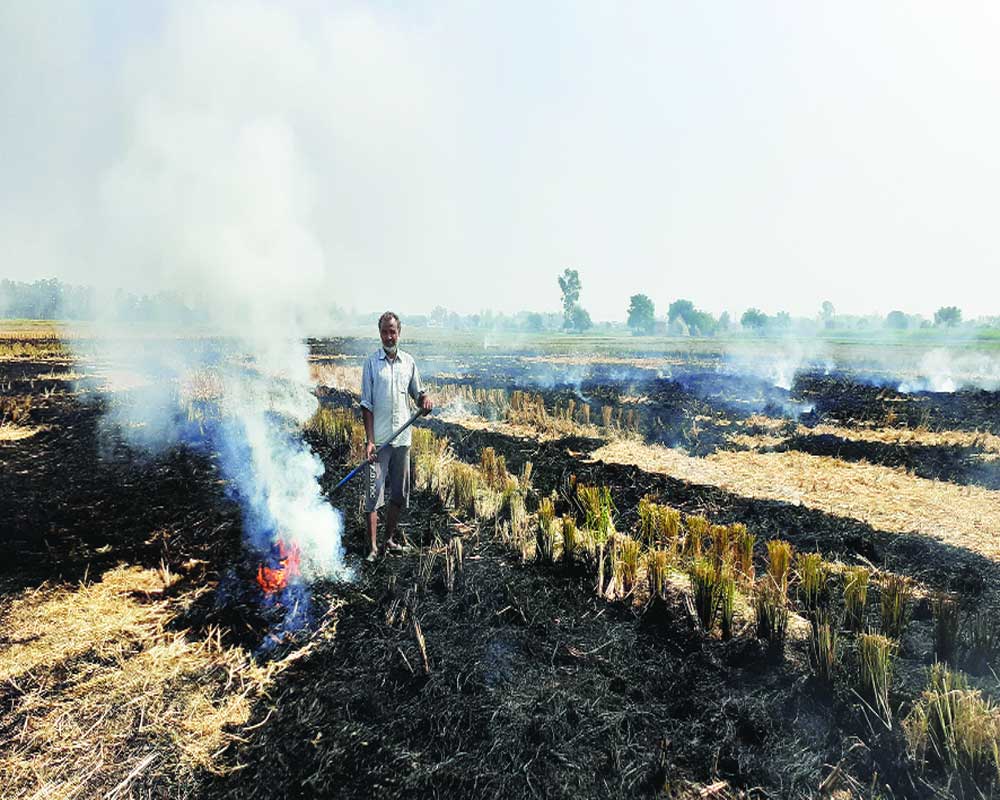The time for debates is over. There is no option but to get into the action mode if we do not want a toxic winter ahead
Now that the late burst of rains and high winds have petered out, the illusion of a clear blue sky has been shattered with the rude reality of smoggy mornings and the autumnal haze. Clearly even predictive models and estimates have not been enough to prepare for a toxic winter. Citizens woke up to a dull Monday morning with the Air Quality Index (AQI) breaching the 200-mark danger of “very poor” environs across Delhi and NCR. It looks like we may have to jump from mission mode to action mode swiftly as data analytics are simply not making sense. Just last week, the Government had claimed how stubble burning, which releases a complex set of aerosols and gases, had declined in the neighbouring States of Uttar Pradesh, Punjab and Haryana. Anecdotal ground evidence and satellite data, however, point to the contrary. Images released by NASA, too, confirm sporadic crop burning in North India since October 13, five days after Dussehra. Around 350 stubble-burning incidents have been reported through satellite mapping in the last 15 days itself, according to Haryana State Pollution Control Board. The smoke from crop residue is expected to make up six per cent of the city’s pollutant load. This even before Diwali. Beyond the immediate repercussions of burning paddy, other sources include pollution from vehicles, industries, diesel gen-sets, open waste burning and above all, soil and road dust — all of which contribute in small and greater proportions to exacerbate particulate matter (PM), nitrogen oxides (NOx) sulfur dioxide and carbon monoxide levels in the air.
It’s not that solutions have not been offered by successive Governments, both at the Centre and the State, but they are still piecemeal. A holistic recovery plan means that we have to rise above the political impacts of restrictive moves, and most importantly, our existing behavioural patterns and conveniences. The late 1990s saw the release of a White Paper, which called for a multi-sectoral action plan for five years. But apart from the vehicular shift to using compressed natural gas (CNG) for fuel and the relocation of brick kilns to the outskirts of the city, nothing else was followed up on. Next came the National Green Tribunal (NGT)’s order on banning crop waste burning but this is half-hearted at best. That’s because the ban has been patchy, the complaints have been few (only 58 FIRs have been registered in Haryana this season) without retributive action and there has been too much passing the buck on who should own its implementation. Although the ban has been in force for almost three years now, farmers violate it routinely, agreeing to pay up the Rs 2,500 fine per two hectares instead of costly weeding or conversion processes. Churning the stubble, which includes rent for the machine, cost of diesel and labour charges, lands anywhere close to Rs 6,000-7,000 per acre. Besides, the equipment itself remains beyond the reach of small and marginal farmers, forget about the lengthy bureaucratic process they have to go through to rent it. So without incentives, no logic would work for them. Finally, the Central Pollution Control Board (CPCB) released a graded action plan with an incremental response, depending upon the air quality. However, with this necessitating a multi-pronged approach to tackle pollution, controlling agencies remained pitted against one another, unable to divide responsibilities among themselves. The Aam Aadmi Party (AAP) Government led by Arvind Kejriwal, too, has been doing its bit at the individual level with the pyrrhic odd-even scheme. But even that has never been holistic, with a host of exemptions, the more polluting two-wheelers being among them. Similar odd-even plans in other cities like Paris were complemented by making public transport system free for all during the operable time period, which led to its resounding success. It’s another matter that Delhi lacks the advantage of a robust transport system. Its current fleet of buses and other forms of transport like the Metro are inadequate for the commuting traffic. Besides, Delhi still has a problem of proximity to industrial units that have to be shut down should the situation get out of hand. There is no dearth of good intention but pollution should now be treated as a permanent rather than a seasonal problem and a unified protocol set in motion. Planning, monitoring, action and evaluation sum up a good policy measure and Delhi cannot do with spurts of conscience anymore.


























